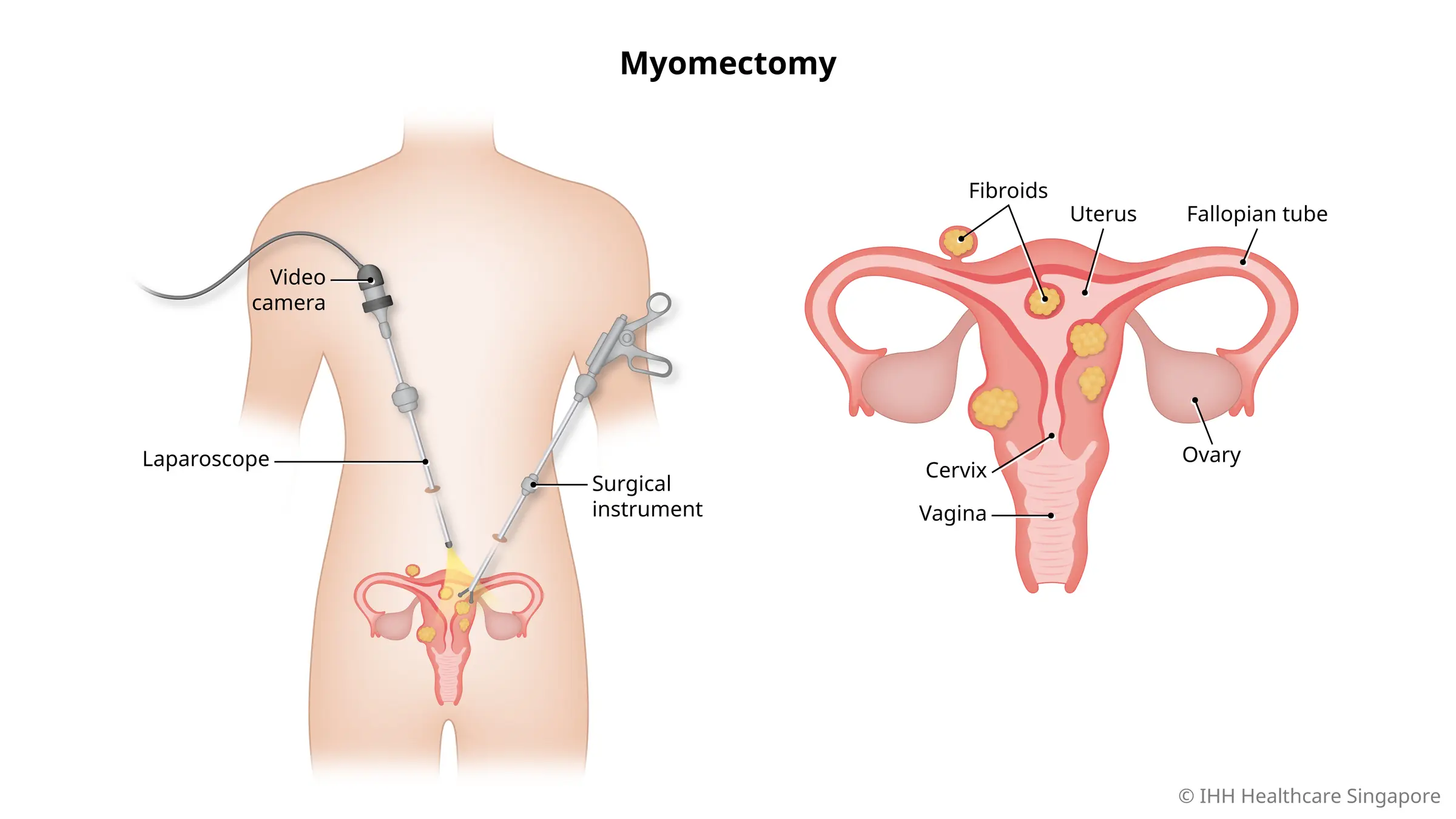What is a myomectomy (fibroid removal)?

Myomectomy, also called fibroidectomy, is a surgical procedure to remove a fibroid or fibrous growth from the uterus. The procedure aims to remove only the fibroid, leaving the uterus in place.
It is typically carried out through abdominal surgery or laparoscopic surgery.
Why do you need a myomectomy?
Your doctor may recommend a myomectomy to preserve your fertility if you have:
- A fibroid that causes pain or bleeding
- Problems with childbearing
Your gynaecologist may recommend a myomectomy instead of a hysterectomy if:
- You plan to have children in the future
- Your fertility is affected by the uterine fibroid
- You want to retain your uterus
What are the risks and complications of myomectomy?
Myomectomy is a safe procedure, with low risk of complications. However, like any other surgery, it carries a small risk.
Complications can include:
- Bleeding
- Damage to nearby organs
- Infection
- Perforation of the uterus
- Reoccurrence of new fibroids after surgery, especially in younger women. The nearer you are to menopause, the less likely the fibroids will recur.
- Scar tissue
- Weakening of the uterus and the possibility of a rupture.
Note: You may need a caesarean section for your next pregnancy. Let your gynaecologist know that you have had a prior myomectomy so that your pregnancy can be managed safely.
How do you prepare for a myomectomy?
Before you undergo the myomectomy procedure, your doctor will advise you on how to prepare. This may include:
- Refraining from food or drink 6 hours before surgery.
- Stopping medications, supplements or vitamins for a period of time before and after surgery. Inform your surgeon about any medication, supplements or vitamins you are taking.
- Consuming medicine to clear your bowels before the surgery.
What can you expect for a myomectomy?
Depending on the number, location and size of your fibroids, there are different surgical options for myomectomy:
Robotic myomectomy
Your surgeon will make small incisions on your abdomen to give robotic arms and surgical tools access to your uterus. This minimises bleeding and enables the surgeon to cut away the fibroids from the surrounding uterine tissue with precision.
Your surgeon will cut the fibroids into smaller pieces that can be easily removed via the initial incisions.
You will experience less post-surgical pain and quicker recovery than with abdominal myomectomy.
Hysteroscopic myomectomy
Otherwise known as Transcervical Resection of Myoma (TCRM), this procedure removes fibroids located within the inner lining of the uterus. Your surgeon will remove your fibroids through a scope that enters your uterus through the cervix.
Recovery takes just a few days.
Laparoscopic myomectomy
This procedure removes fewer and smaller fibroids. However, it may work for large fibroids too.
Your surgeon will remove the fibroids using a laparoscopic arm inserted through several small incisions on the abdomen. Because the incisions are small, this procedure causes less pain than an abdominal myomectomy.
Full recovery can take between 4 – 6 weeks.
Abdominal myomectomy
This procedure removes large fibroids.
Your surgeon will make a surgical cut to your lower abdomen to get to the fibroids and remove them. The uterine muscle is sewn back together after that.
Full recovery can take up to 6 weeks.
Care and recovery after a myomectomy
Your hospital stay and recovery time will vary depending on the type of myomectomy performed and your own body’s reaction.
Abdominal myomectomy:
- 1 – 2 nights hospital stay for observation.
- 6 – 8 weeks of reduced activity or bed rest.
Hysteroscopic myomectomy:
- As this is an outpatient procedure, you will be able to return home after 1 – 2 hours in the recovery room.
Laparoscopic myomectomy:
- At least a night’s stay in the hospital for observation.
- 4 weeks of reduced activity or bed rest after discharge.
Robotic myomectomy:
- At least a night’s stay in the hospital for observation.
- 4 weeks of reduced activity or bed rest after discharge.







